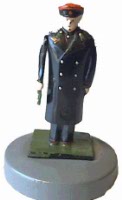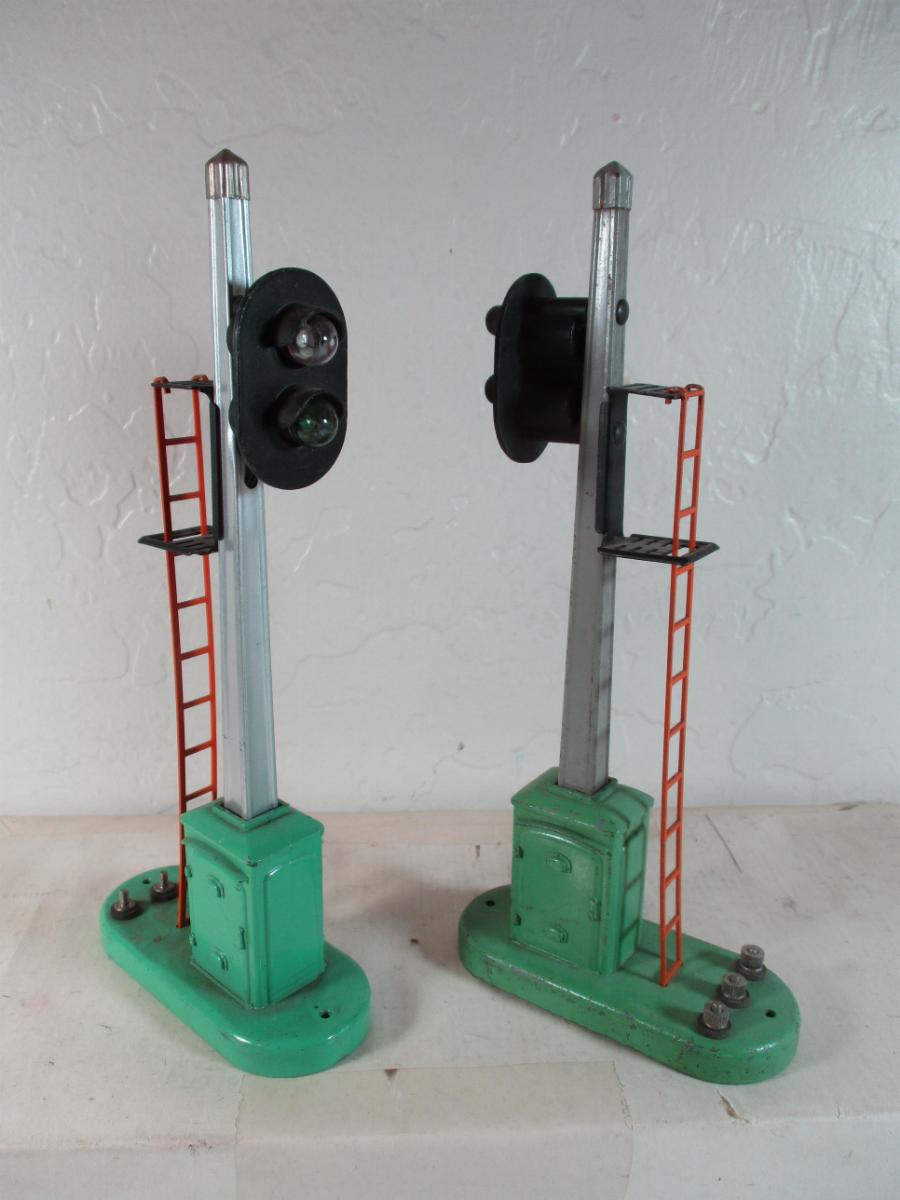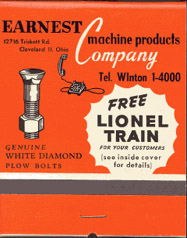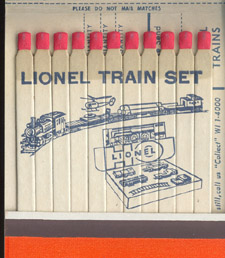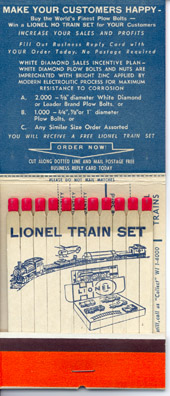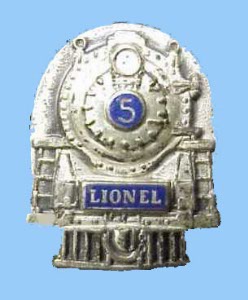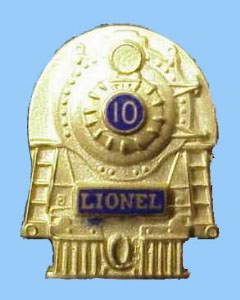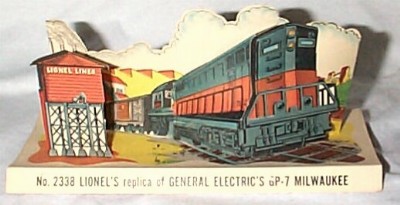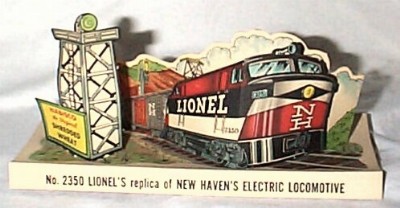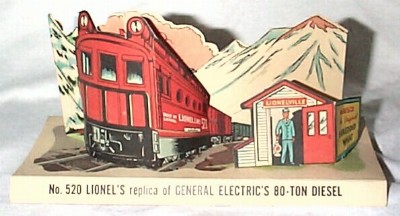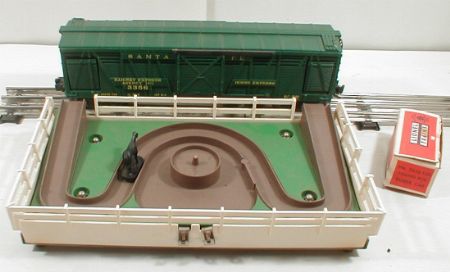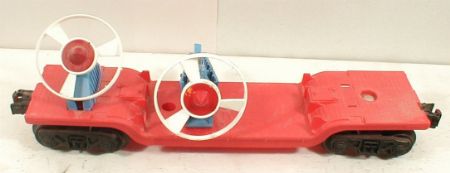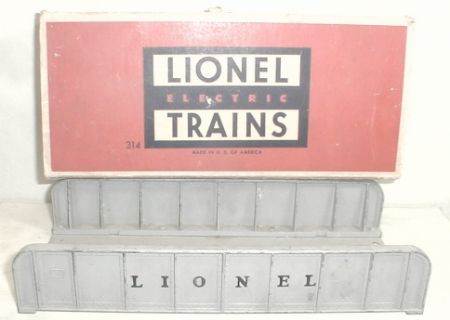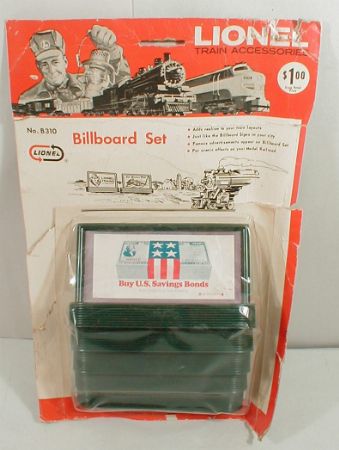The Russian train set was made in the late 1950’s and early 60’s. At least I think so because there are dates or at least things that could be dates rubber-stamped on the bottoms of all the items. This was sold as a set with all the items shown below and a bridge and crossing gate not shown.
The track is numbered with riveted on metal tags. You start with the section numbered one and connect number two to it and so on until you have set up the entire layout. There are wire harnesses that clip
to the track and have plugs similar to the type found on Marklin HO trains.
All the contents appear to be copies of toy trains made by other manufacturers. Oddly the Russians did not copy new trains, they copied older items. This could be because their technology was better suited
to making trains with 20-year-old manufacturing methods.
The die casting of the engine is very well executed, and the overall construction is superb. These could be the only toy trains produced in a command economy. Obviously the profit motive was not a factor in
the design.
As far as I know after 1948 no American company made complete ready to run train sets that included accessories except Marx’s low cost train sets and the failed All Aboard train sets made by American Flyer in the 1960’s.
The accessories included with the Russian train were not available separately. However, there does seem to be a lot more accessories out there than trains. This could be because the trains were thrown out instead of being repaired and the accessories were then used with other trains.
Note: The pictures are not to scale. Engine is actually longer than the passenger cars.
The Set.
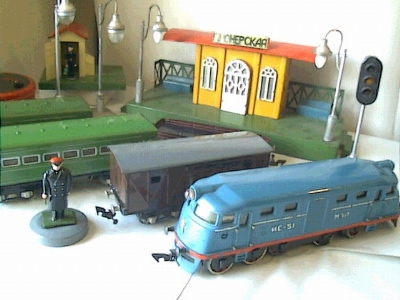
This is the set with a few extra items added.
The Station.<
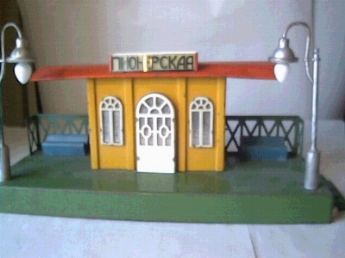
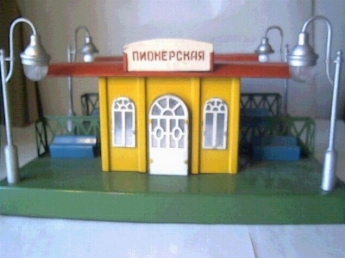
The station has a bell inside it and light. The station has punched out widows with nice sheetmetal frames in them. They look like they were designed to hold glass in the frames. There is no glass in the
frames though. There is, however, plated sheetmetal in the frames. Note sheetmetal, unlike glass is NOT transparent. So why is there a bulb inside?
I used to joke with my dad when he had only one station to
look at that it must be because they were designed by a committe. One person wanted a lighted station, while another thought the shiney metal looked good so they compromised and did both! My dad suggested it was because they were made in Communist Russia and the guy who added the bulb to the station needed the job.
Only one station came with the set. The station on the left should have light covers like the upper station on the streetlights.
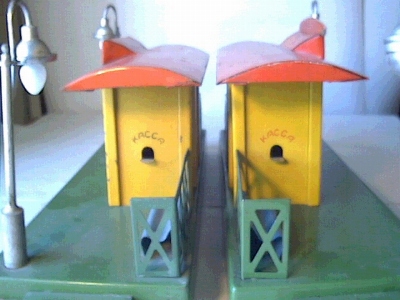
These small holes are the only place light can come out of the station. Notice black lettering on one and red on other.
The Engine.

The engine is a big blue 12 wheeled diesel locomotive. It is diecast metal. Only the four inner wheels are powered. The loco can also be found in brown or green.
The Passenger Cars.
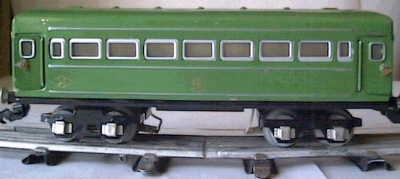
The set came with two of these green coaches. There is a variation of the lettering and the color changes to a brighter shade in the later trains.
The Boxcar.
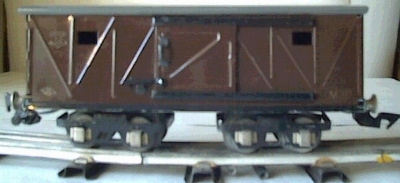
Only one of boxcar came in the set. There are probably variations in the lettering, but with only the one shown to look at I can’t make any statements. The door slides. All cars have die cast metal wheels with
oversized flanges, and couplers similar to American Flyer Link and Pin style couplers.
The Flat Car.
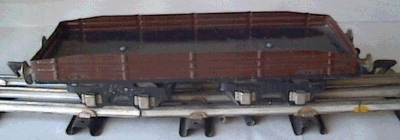
One flatcar came in each set. This car comes in two shades of brown. Only one is shown. I don’t know if this car came with a load.
The Gateman and Flagman.
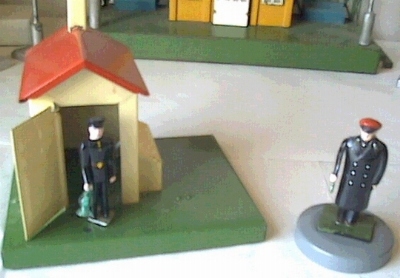
The Gateman is a copy of a Lionel 45 gateman introduced in 1935. When a train goes past the man comes out and waves at traffic. It does not have warning sign like Lionel’s version. The Flagman is a smaller copy of the Lionel 1045 Flagman introduced in 1938. Like the Gateman there is not a crossing sign.
Streetlights and Block Signals.
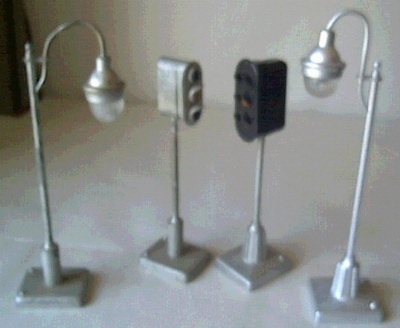
I don’t know how many of each came with a set. Two different bases were made over the years. The block signal also came with two different heads. The streetlight has a glass bowl over the bulb to give it the shape you see in the photo.
The Transformer is rated at 75 watts and runs on 127 volts 50 cycle current. The output is 5 to 13 volts AC for the train and 13 volts for the accessories.This is a beautiful set of trains with an interesting history.
